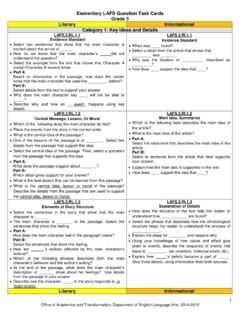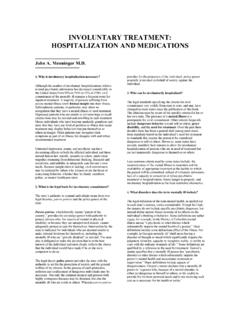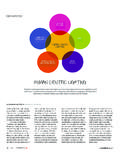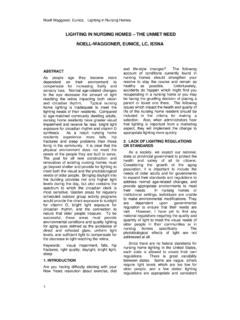Transcription of BIS Quarterly Review
1 BIS Quarterly ReviewDecember 2016 International bankingand financial market developments BIS Quarterly Review Monetary and Economic Department Editorial Committee: Claudio Borio Benjamin Cohen Dietrich Domanski Hyun Song Shin General queries concerning this commentary should be addressed to Benjamin Cohen (tel +41 61 280 8421, e-mail: queries concerning specific parts to the authors, whose details appear at the head of each section, and queries concerning the statistics to Philip Wooldridge (tel +41 61 280 8006, e-mail: This publication is available on the BIS website ( ). Bank for International Settlements 2016. All rights reserved. Brief excerpts may be reproduced or translated provided the source is stated. ISSN 1683-0121 (print) ISSN 1683-013X (online) BIS Quarterly Review , December 2016 iiiBIS Quarterly Review December 2016 International banking and financial market developments A paradigm shift in markets?))
2 1 Markets resilient amid major change in outlook .. 2 Bond markets sell off .. 4 Emerging market economies under pressure .. 7 Dollar funding costs rise in wake of reform .. 10 Highlights of global financial flows .. 13 Takeaways .. 13 Recent developments in the international banking market .. 14 International debt securities issuance reverts to dollars .. 18 Box A: Central clearing predominates in OTC interest rate derivatives markets .. 22 Box B: China and Russia join the BIS locational banking statistics .. 25 Special Features Glossary .. 27 Downsized FX markets: causes and implications .. 35 Michael Moore, Andreas Schrimpf and Vladyslav Sushko The changing composition of FX markets .. 37 Box A: Drivers of aggregate FX turnover .. 38 New mechanisms of liquidity provision .. 42 Box B: The rise and financialisation of the renminbi .. 43 Box C: How large are FX dealers trade internalisation ratios?
3 45 Shift towards relationship-driven electronic trading .. 46 Conclusion .. 50 The changing shape of interest rate derivatives markets .. 53 Torsten Ehlers and Egemen Eren OTC interest rate derivatives turnover in April 2016 .. 55 iv BIS Quarterly Review , December 2016 Regulatory reforms and the structure of OTC markets .. 59 Drivers of trading dynamics in the OTC market .. 60 GSEs and US dollar interest rate swap markets .. 62 Conclusions .. 63 Emerging derivatives markets? .. 67 Christian Upper and Marcos Valli Derivatives markets in emerging and advanced economies .. 68 Box A: The changing landscape of renminbi offshore and onshore markets .. 72 Why is EME derivatives turnover so low? .. 74 Box B: Derivatives markets in Brazil .. 75 Conclusions .. 78 Non-deliverable forwards: impact of currency internationalisation and derivatives reform .. 81 Robert McCauley and Chang Shu NDF developments in 2013 16.
4 82 NDFs and paths of foreign exchange liberalisation .. 86 NDFs and derivatives reform .. 89 Box A: NDF trading during the August 2015 renminbi volatility .. 90 Conclusions .. 91 Annex .. 93 Does the financial channel of exchange rates offset the trade channel? .. 95 Jonathan Kearns and Nikhil Patel The trade channel .. 96 The financial channel .. 98 Data and methodology .. 99 Box A: Debt-weighted exchange rate indices .. 100 Results and discussion .. 103 Conclusion .. 108 Appendix .. 112 BIS statistics: Charts .. A1 Special features in the BIS Quarterly Review .. B1 List of recent BIS publications .. C1 BIS Quarterly Review , December 2016 v Notations used in this Review billion thousand million e estimated lhs, rhs left-hand scale, right-hand scale $ US dollar unless specified otherwise .. not available.
5 Not applicable nil or negligible Differences in totals are due to rounding. The term country as used in this publication also covers territorial entities that are not states as understood by international law and practice but for which data are separately and independently maintained. BIS Quarterly Review , December 2016 1 A paradigm shift in markets? Global bond yields have continued to rise markedly in recent months. After core fixed income markets had plumbed new historical depths this summer, overall yields had jumped sharply by the end of November in fact by a magnitude similar to that of the taper tantrum of May September 2013. But despite record high duration risk, there were few signs of stress in credit markets as spreads remained tight and volatility was contained. Initially supported by positive macroeconomic news globally, the rise in yields sharply accelerated after the US presidential election.
6 Bond market reactions around election day resembled those surrounding the first election of Ronald Reagan in 1980. Buoyant US equity markets also echoed that distant event, suggesting that markets expected a boom in the United States and higher corporate profits on an anticipated shift towards more expansionary fiscal policy, lower taxes and laxer regulation. Accordingly, market odds of tighter monetary policy increased in the United States and the dollar strengthened. The global rise in yields and the strengthening of the dollar weighed on the assets of emerging market economies (EMEs). Until early November, EMEs were unscathed by developments in advanced economies. Then, investor sentiment shifted markedly. Bond outflows and exchange rate depreciation in the post-election week were even larger than at the height of the taper tantrum. However, credit and equity market reactions in EMEs were more muted than in 2013, possibly reflecting a different economic and financial backdrop.
7 EME funds had already experienced large outflows instead of steady inflows in recent years, defusing pressures on asset valuations. A prospective boom in the United States may also have been seen to benefit EMEs. Yet risks remain, in particular given a high degree of political uncertainty in several key jurisdictions. In addition, 10% of EMEs dollar-denominated corporate debt is scheduled to mature in 2017, which could put further pressure on EME financial markets. Short-term dollar funding rates rose significantly, mainly in response to changes in regulations pertaining to prime money market funds that took effect in October. A 70% decline in assets under management by these funds since October 2015, combined with a shift in their portfolios towards shorter maturities, led to a substantial widening of Libor-OIS spreads. But this did not cause any major disruption, in contrast to earlier periods of similar spread widening.
8 2 BIS Quarterly Review , December 2016 Markets resilient amid major change in outlook In the weeks leading up to the US election, markets continued their recovery from the financial shock triggered by the UK Brexit vote on the back of a string of positive macroeconomic news. Volatility was at or below historical averages (Graph 1, left-hand panel). Equities held up well (Graph 1, centre panel), and credit spreads remained tight. Bond yields in advanced economies kept edging higher following their record lows in the summer. Market developments reflected better than expected third quarter GDP growth in advanced economies, and the release of manufacturing purchasing managers indices a leading indicator of growth signalling an economic expansion in most countries. At the beginning of October, growing expectations of a hard Brexit exerted renewed depreciation pressure on the pound sterling (Graph 1, right-hand panel), although this did not reverberate much through financial markets globally.
9 Even a flash crash on 7 October, when, within a few seconds, the pound lost 9% vis- -vis the US dollar before quickly recovering, propagated few ripples in the wider marketplace. On 8 November, markets swung wildly as they were caught off guard by a political outcome for the second time this year. As the surprise result of the US election crystallised during election night, S&P 500 futures plunged as much as 6%, 10-year Treasury yields declined by almost 20 basis points, and the dollar weakened US election shakes markets Graph 1 Implied volatilities1 Stock prices Nominal exchange rates5 Percentage points Percentage points 4 Jan 2016 = 100 4 Jan 2016 = 100 The vertical line indicates 8 November 2016, the day of the US presidential election. 1 The dashed horizontal lines represent simple averages for the period from 2010 to the present for each implied volatilityseries.
10 2 JPMorgan VXY Global index, a turnover-weighted index of the implied volatility of three-month at-the-money options on 23 USD currency pairs. 3 Implied volatility of at-the-money options on long-term bond futures of Germany, Japan, the United Kingdom and the United States; weighted average based on GDP at PPP exchange rates. 4 Implied volatility of the S&P 500, EURO STOXX 50, FTSE 100 and Nikkei 225 indices; weighted average based on market capitalisation. 5 An increase indicates depreciation of the local currency against the US dollar. 6 Trade Weighted US Dollar Index: Major Currencies (DTWEXM). An increase indicates an appreciation of the US dollar in trade-weighted terms. Sources: Board of Governors of the Federal Reserve System; Bloomberg; JPMorgan Chase; BIS calculations. 68101210152025Q1 16Q2 16Q3 16Q4 16 Exchange rates2 Bond futures3 Lhs:Equities4 Rhs:406080100Q1 16Q2 16Q3 16Q4 16 EURO STOXX BanksTOPIX BanksS&P 500 BanksS&P 50090100110120Q1 16Q2 16Q3 16Q4 16 Pound sterlingTrade-weighted US dollar index6 BIS Quarterly Review , December 2016 3 by 2% against a basket of currencies (Graph 2, left-hand panel).

















